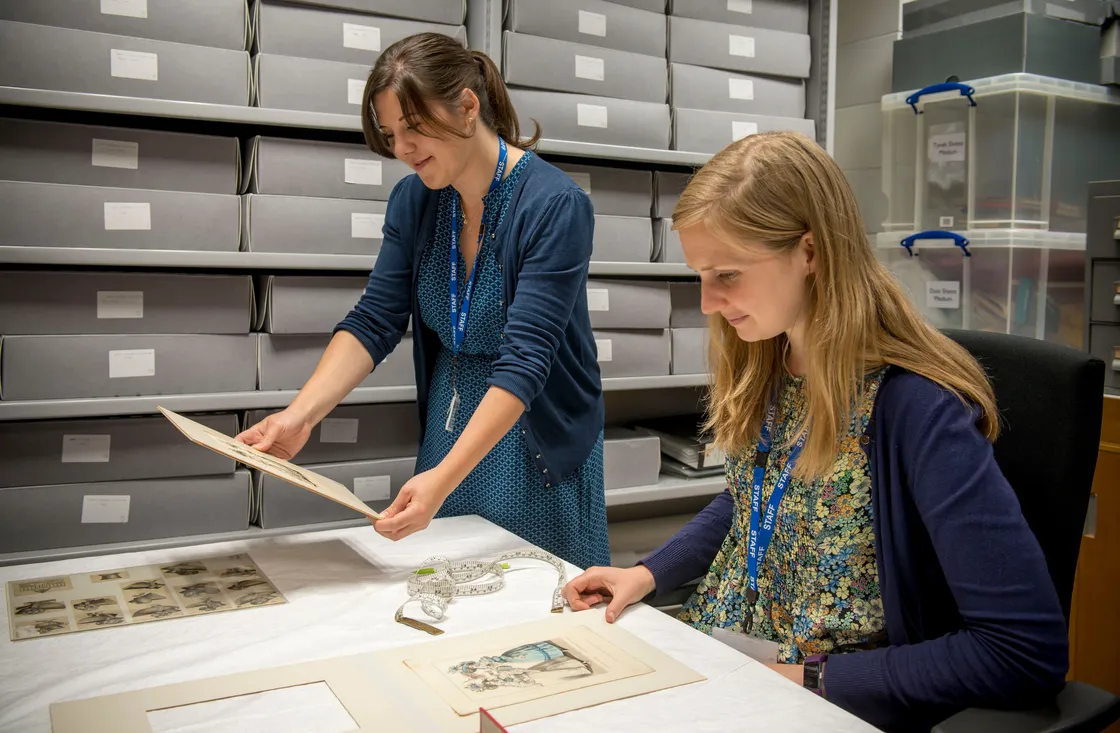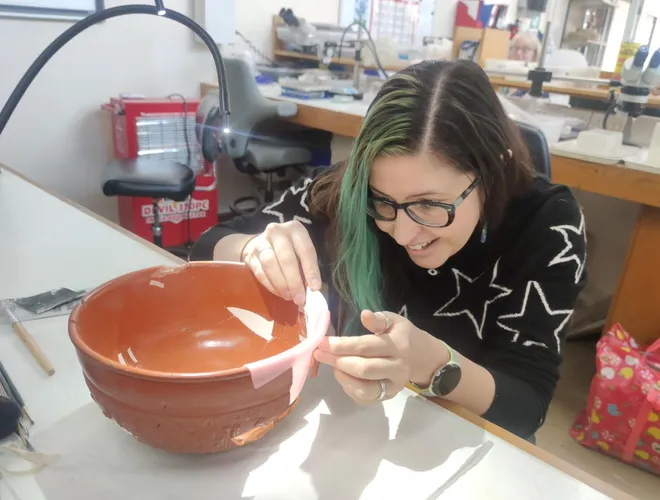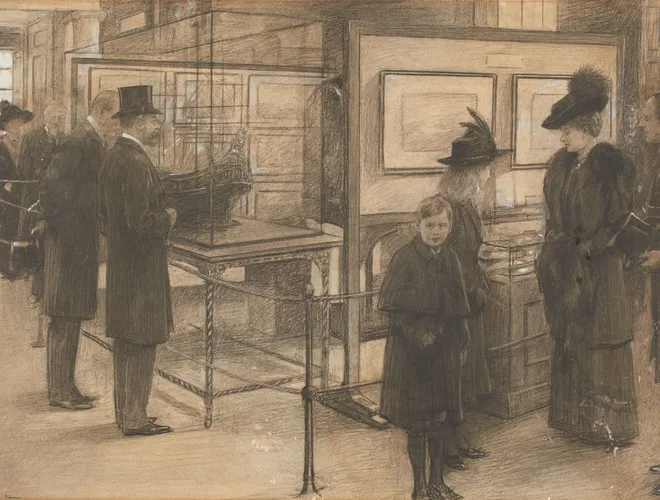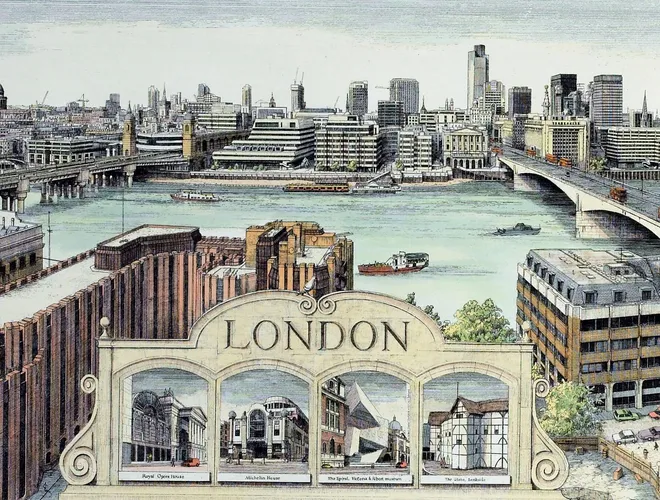Managing our collections
Collections management ensures objects are safely preserved for future generations. Whether in storage, on display, being handled or moved, we follow best practices to keep our collections safe and accessible.
London Museum is proud to be the world’s biggest city museum. It is also one of the largest archaeological archives in the world. We tell the story of London and its people from pre-history to the present day.
Our collection holds seven million items, ranging across archaeology, artwork, dress and textiles and everyday objects. Keeping the collection safe is extremely important to us and is a challenging and varied task.

Conservator Luisa Duarte working on a stone eagle, 2013.
What is collections management?
Collections management is how we look after and manage the objects in our care, following industry best practices to conserve, document, catalogue, store, handle or move them. It also involves research, providing access for the public and ensuring key information about the objects is up-to-date. The people directly involved in developing and managing the collection need a huge range of expertise. From shaping the collection to cover all aspects of London life, to logistical considerations such as how to legally and safely ship an object on loan to an international venue.
Once part of our museum’s collection, our teams treat all objects with the same level of care to ensure they are kept safely and preserved for the future.
London Museum meets the nationally agreed standards for collections care and holds accredited status under the Arts Council England (ACE) Accreditation Scheme.
Key activities at the museum such as exhibitions, learning and public research access can only be effectively delivered if the collections are well-researched, documented and conserved.

Documentation officers Annie McCulloch and Naomi Russell updating object information for fashion prints.
How do we care for the collection?
The collection is actively managed by staff across the museum on a day-to-day basis, and three departments share this responsibility – Collections Management, Conservation and Collection Care and Curatorial.
Management and documentation
The Collections Management team has a wide range of responsibilities, including strategies, policies, processes and procedures that manage the museum collection and the information we hold about them. They also manage the practicalities of new acquisitions, lending to other institutions, overall care and access of collections and managing all the information about the objects in our database.
Conservation and care
The Conservation and Collection Care team’s job involves a wide range of activities – from ensuring the right conditions and environment for exhibiting and storing all objects, to keeping pests like moths and silverfish far away. Much of this work cannot be physically seen, but without this, the bulk of our collections would be actively deteriorating. Conservators use their specialist skills to stabilise fragile and deteriorating objects, and often carry out painstakingly careful cleaning so that they can be put on display.
Curatorial research and development
The Curatorial team identifies, researches and collects objects that are significant to narrating the history of London – both past and present. Curators research the stories that the collections allow us to tell about London past and present. They work and collaborate with Londoners to reflect the city in all its grit and glitter.
Want to know more?
PDF: 233.6 KB
Please view/download our Collection Management Policy for further information on how the collection is cared for and managed.
More on our collections
-

Managing archaeological collections
Find out how these fantastic finds make their way to us, and how we care for them
-

About our collections
Explore the lives and stories of Londoners through more than seven million objects, including the world’s largest archaeological archive
-

History of our collections
Our diverse collections trace the rich history of London and its people, from archaeology to digital archives
-

What we collect
The museum collects objects that help to tell the stories of this diverse, multicultural city of over nine million people







